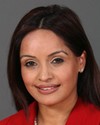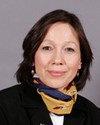Thank you, Josée.
We are asking for something that is probably unique, and we readily admit we are trying to distinguish our cause of funding for diabetes type 1 research because of what JDRF has already produced.
In my conversations with some of the committee members and other members of Parliament, I did not have the opportunity to mention what I am about to say.
It has been suggested that perhaps apart from the previous history I have as a volunteer with JDRF that I discuss an issue that relates to what you have heard from Chloe and what you're going to hear from Mitchell. I say this in the context of Canada and of being a Canadian who is familiar with Canadian research results already on the books.
I too was diagnosed with type 1 diabetes as a young child. Chloe gave you a list of the complications that can arise. After 37 years, I suffered kidney failure and was on dialysis. I have first-hand knowledge of what happens to you no matter how well you control your blood sugars, how regularly you take your exercise, and how attentive you can be. I spent four hours a day, three days a week hooked up to a machine to stay alive. I won't dwell on the bad news. I had, among other members in my family, one particular brother who tested positive and was accepted to donate a kidney to me. The day before that transplant surgery was scheduled, a compatible pancreas became available within the Montreal region, where I live. On April 13, 1999, I became the first Canadian to successfully receive a double transplant of a kidney from a living donor and a pancreas at the same time. So for seven and a half years, I have had personal knowledge of living on the other side of the line without the need for constant finger pricks, blood sugar monitoring, and insulin injections.
My point in telling the story is that today, this year, the Royal Victoria Hospital, where that surgery was done, has now done 16 pancreas and kidney transplants. They expect to do 25. That is as a result of Canadian research and Canadian medical expertise. When I was the first in Canada, I was the third in the world, so let's keep in mind that Canada has always proven to be a leader in medical and health research related particularly to type 1 diabetes and its complications.
I think that we must keep that in mind, because we will also unabashedly wrap ourselves in the Canadian flag, not because it's a wonderful emotional argument to our federal government, but because there are provable successes out there.
I would ask you, please, to ask your staff to double-check what we are saying to you, from what the Globe and Mail pointed out in their list of Canada's ten best things, Banting and Best's discovery of insulin, to, since then, Canadian research into type 1 diabetes. I have had the occasion to meet people from other countries through JDRF, many of whom have trouble speaking English or French. While perhaps I can't understand what they say most of the time, they can pronounce very well two words - “Edmonton protocol”. Dr. James Shapiro and his medical team have made fantastic advances and continue to do so in islet transplants. Since then almost every year in Canada, Dr. Leo Behie, Dr. Lawrence Rosenberg, Dr. Derek van der Kooy.... There must be a reason why Canada on a pro rata basis is head and shoulders above the world in type 1 diabetes research.
That is why we are proposing something that is unique as we address the health committee to discuss funding for an organization like ours with the federal government in Canada. We're not simply asking for a handout of $125 million. We're asking for a partnership. Please come to the table and sit down, and let's look at what a research path could look like for type 1 diabetes. We are far beyond basic research.
One of the new tag lines of JDRF is “fund the gaps”--in other words, how we continue to make these quantum leaps. The business strategy of JDRF International--and I emphasize international, because we fund research in at least 37 countries around the world--is based on getting tangible results within five years.
JDRF goes where the best research is. We continue to strive to increase our fundraising efforts every year--and we have done very well at it, I may add. We have always been net importers of research dollars. The international research analysis and allocation has resulted in this recognition of Canadian talent, of proven Canadian success, and of the potential for what we call a “made in Canada cure”, which started back in the 1920s with Drs. Banting and Best.
Those are the two points I would ask you to take from our presentation and our requests of you.
With that, it is my pleasure to introduce to you Mitchell Burke, who has a few words of his own.



